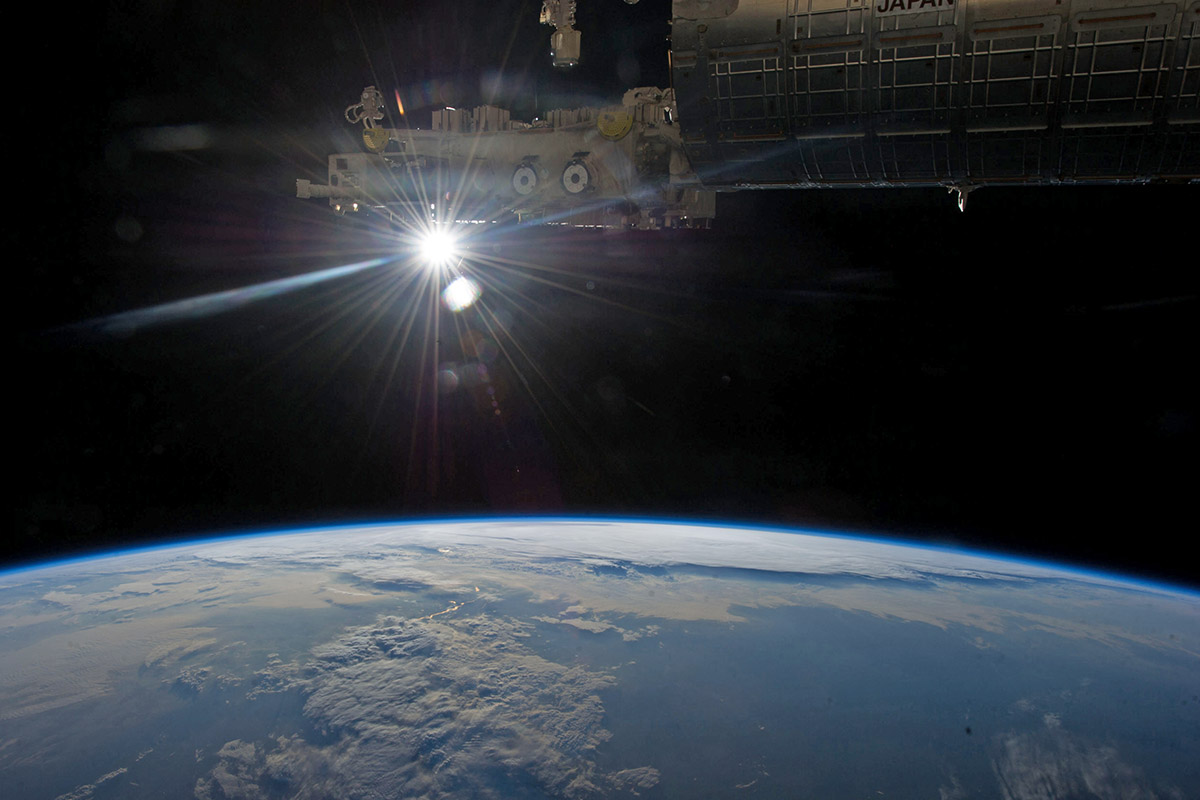Solar Flares May Affect Earth, But the Space Station Will Be Just Fine
A series of solar flares blasted waves of radiation and solar plasma toward Earth this week, and the geomagnetic storms that could result have the potential to damage orbiting satellites and disrupt communications on Earth. But the International Space Station is expected to weather the storm just fine.
"There will be no impact to the crew or station operations and no impact to station hardware," NASA spokesman Dan Huot told Space.com in an email. [In Photos: The Sun's Monster X9.3 Solar Flare]
Since Monday (Sept. 4), the sun has emitted five significant solar flares from an active sunspot region labeled AR 2673. Solar flares occur when the sun's magnetic field releases a burst of energy, which can disrupt communication networks and navigation systems on Earth within a matter of minutes.

Along with those flares, two coronal mass ejections (CMEs) have erupted from the same region. CMEs release huge clouds of plasma — charged particles from inside the sun — that take up to three days to reach Earth. When that sea of plasma hits Earth's atmosphere, it can supercharge the northern and southern lights, creating spectacular light shows around Earth's poles.
Although the crew aboard the space station may not experience any of the less favorable effects of the recent solar activity, they will likely see some amazing auroras from space.
Email Hanneke Weitering at hweitering@space.com or follow her @hannekescience. Follow us @Spacedotcom, Facebook and Google+. Original article on Space.com.
Get the Space.com Newsletter
Breaking space news, the latest updates on rocket launches, skywatching events and more!
Join our Space Forums to keep talking space on the latest missions, night sky and more! And if you have a news tip, correction or comment, let us know at: community@space.com.

Hanneke Weitering is a multimedia journalist in the Pacific Northwest reporting on the future of aviation at FutureFlight.aero and Aviation International News and was previously the Editor for Spaceflight and Astronomy news here at Space.com. As an editor with over 10 years of experience in science journalism she has previously written for Scholastic Classroom Magazines, MedPage Today and The Joint Institute for Computational Sciences at Oak Ridge National Laboratory. After studying physics at the University of Tennessee in her hometown of Knoxville, she earned her graduate degree in Science, Health and Environmental Reporting (SHERP) from New York University. Hanneke joined the Space.com team in 2016 as a staff writer and producer, covering topics including spaceflight and astronomy. She currently lives in Seattle, home of the Space Needle, with her cat and two snakes. In her spare time, Hanneke enjoys exploring the Rocky Mountains, basking in nature and looking for dark skies to gaze at the cosmos.









